Hītori
Te Hītori o Te Ana Tapu (1865 – 1969)
Before being re-dedicated as the home of Te Mīhana Māori (the Auckland Anglican Māori Mission) – The Church of the Holy Sepulchre was operated by the Anglican Diocese of Auckland. Originally located on Symonds Street, the Church of the Holy Sepulchre was first opened on August 27, 1865 – under the leadership of the Venerable Benjamin Thornton Dudley. In its early years, Holy Sepulchre experienced such significant congregational growth that a new purpose-built church was opened on June 29, 1881 on a new site (the same church building and location where the current mission stands today). However, this congregational growth dwindled in the 1950s as many left the Grafton area due to the suburban drift and the re-zoning of Auckland city as ‘light industrial.’ In October 1963, the Auckland Diocese decided to deconsecrate the Church of the Holy Sepulchre. Following this, the Auckland City Mission used the site temporarily, before vacating the premises for the Auckland Māori Mission’s arrival in 1969 under the leadership of the Venerable Sir Kīngi Īhaka (the first Māori Missioner of Tāmaki Makaurau). The church was re-dediacted as Te Mīhana Māori (the Auckland Māori Mission) on August 2, 1969.
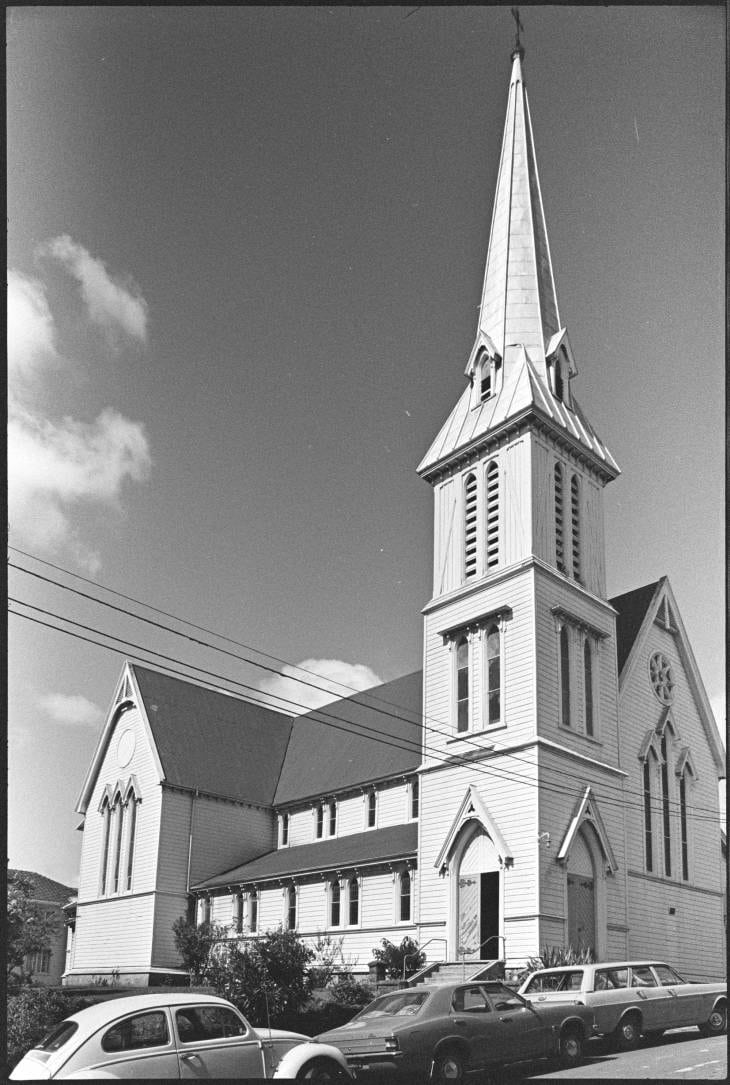
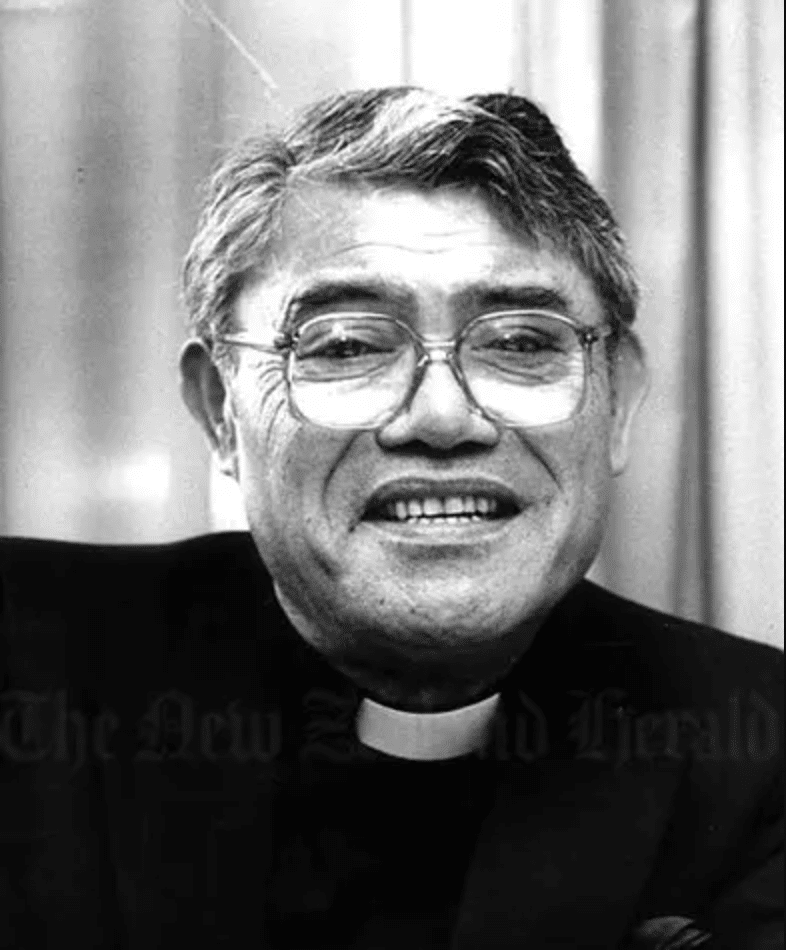
Te Hītori o Te Mīhana Māori (1967 – ināianei)
In 1967, as the Anglican Māori Missioner of Tāmaki Makaurau, the Venerable Sir Kīngi Īhaka recognised the pressing need to establish a centre where rural Māori could find a home within Metropolitan Auckland. This home was not going to be found in the pre-existing Anglican churches of Tāmaki Makaurau, as they were unprepared to serve the needs of Māori. This is affirmed by historian Allan Davidson, who shares, “The church was slow in coming to terms with the sociological realities associated with the large Māori migration to Auckland and Whangārei after the Second World War.” Fortunate to receive the Church of the Holy Sepulchre on August 2, 1969 from the then Bishop of Auckland – Bishop Eric Gowing, during the re-dedication of the church Bishop Gowing shared that, “First of all, I want to say how much I rejoice with you all – Missioner and people alike – in the knowledge that you now have an abiding centre for your very important work for God and His Kingdom. Exciting new possibilities open up and I trust you will be able to use them to the full – for His honour and glory.” Ever since, Te Mīhana Māori has had a rich history of serving the people of Tāmaki Makaurau, in particular urban Māori.
Te Hītori o Ngā Kaimīhana Māori
(1932 – ināianei)
The role of Missioner was first established in 1932 and held by The Right Reverend Wiremu Nētana Pānapa (Bishop of Aotearoa). The Venerable Sir Kīngi Īhaka shares that, “Pānapa’s term began prior to World War 2, when the Maori population in and around Auckland was insignificant as compared to the population of today.” As the Māori Missioner, Panapa devoted his time to two main focuses – supporting urbanised Māori, and encouraging wāhine into church leadership. During World War Two, Pānapa resigned from his post to become a Chaplain for the Māori Battalion. The role of Māori Missioner was then held by Reverend Aperahama Kena (1940-1948), Reverend John Fisher (1950-1954), and then The Reverend Canon Mangātitoki Cameron (1960-1966). Following Cameron, in June 1967, the Venerable Sir Kīngi Īhaka was inducted as the Auckland Māori Missioner at All Saints Church, Ponsonby. At the beginning of Kingi’s post, the Māori mission had based itself out of All Saints Church, before moving to the Church of the Holy Sepulchre.
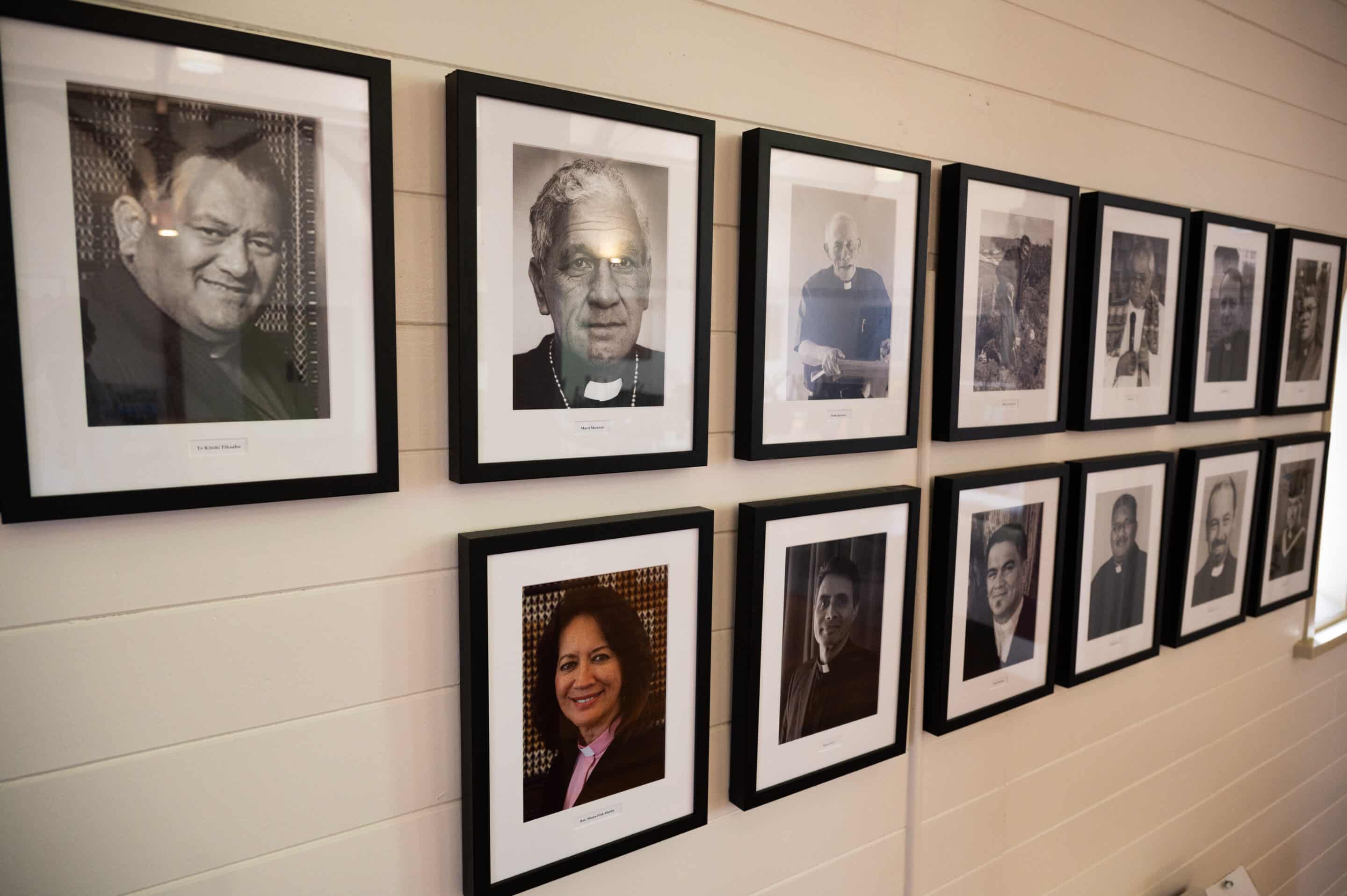
Since the Venerable Sir Kīngi Īhaka’s time, the Māori Missioners and other key clergy leadership have included:
– The Venerable Hone Kaa
– The Reverend Maori Marsden
– The Reverend John Paterson
– The Reverend Frank Harrison
– The Reverend Toro Īhaka
– The Reverend Lemuel Pearse
– The Reverend Roger Hill
– The Reverend Lloyd Popata
– The Reverend Tony Brooking
– The Reverend Kerry Davis
– The Reverend Shona Pink-Martin (current; first female Māori Missioner)

Pepeha Mātāpono
The two foundational taglines of Te Mīhana Māori: ‘Te Taki o te Whakapono’ and ‘Te Wero o te Whakapono’. These two taglines were gifted by the first Auckland Māori Missioner – the Venerable Sir Kīngi Īhaka, to the two different areas on site. ‘Te Taki o te Whakapono’ was gifted to Tātai Hono (the onsite marae), and ‘Te Wero o te Whakapono’ to Te Ana Tapu (the onsite church).
‘Te Taki o te Whakapono’ challenges the mission to bring the fullness of tikanga Māori into their practice of faith, particularly within our marae – Tātai Hono. While ‘Te Wero o te Whakapono’ challenges the mission to bring the fullness of the Gospel into their faith practice, particularly within our church – Te Ana Tapu. In his commentary on the mission, Bradford Haami (Māori author, journalist and lecturer) affirms that, “Sir Kīngi Īhaka created a two-pronged approach to the premises – worship in the church, and the work of cultural restoration through events in the hall, which eventually became the wharenui named Tātai Hono.”
Te titonga waiata mō te whakatapu anō i Te Ana Tapu
When the first Missioner, the Venerable Sir Kīngi Īhaka, received the great news that the Church of the Holy Sepulchre, hall and part of the land were to be acquired as the centre for the Auckland Māori Mission, one of his first duties was to compose a song to mark the official transfer of the property to the Mission. The title of the song, ‘Whakaruruhau,’ means Sanctuary.” These are the words of that song:

Ngā Tukutuku
In the sanctuary of Te Ana Tapu, we have a series of 7 tukutuku panels (lattice panel work) that reflect the story of the arrival of the Gospel in Aotearoa. These panels were installed in 2019 on the 50th anniversary of Te Mīhana Māori’s establishment at Holy Sepulchre.

Panel 1

Panel 2

Panel 3
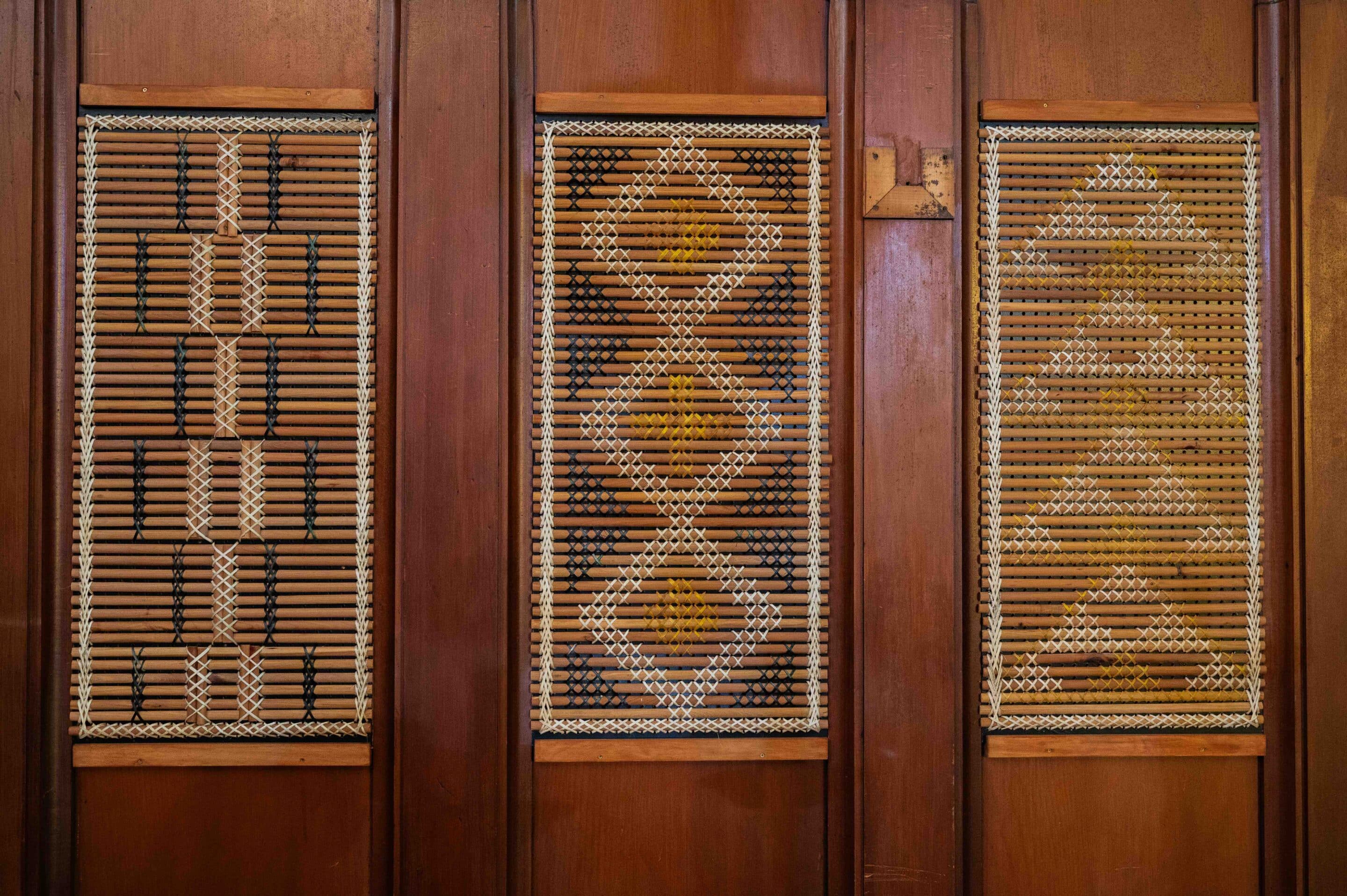
Panel 4

Panel 5
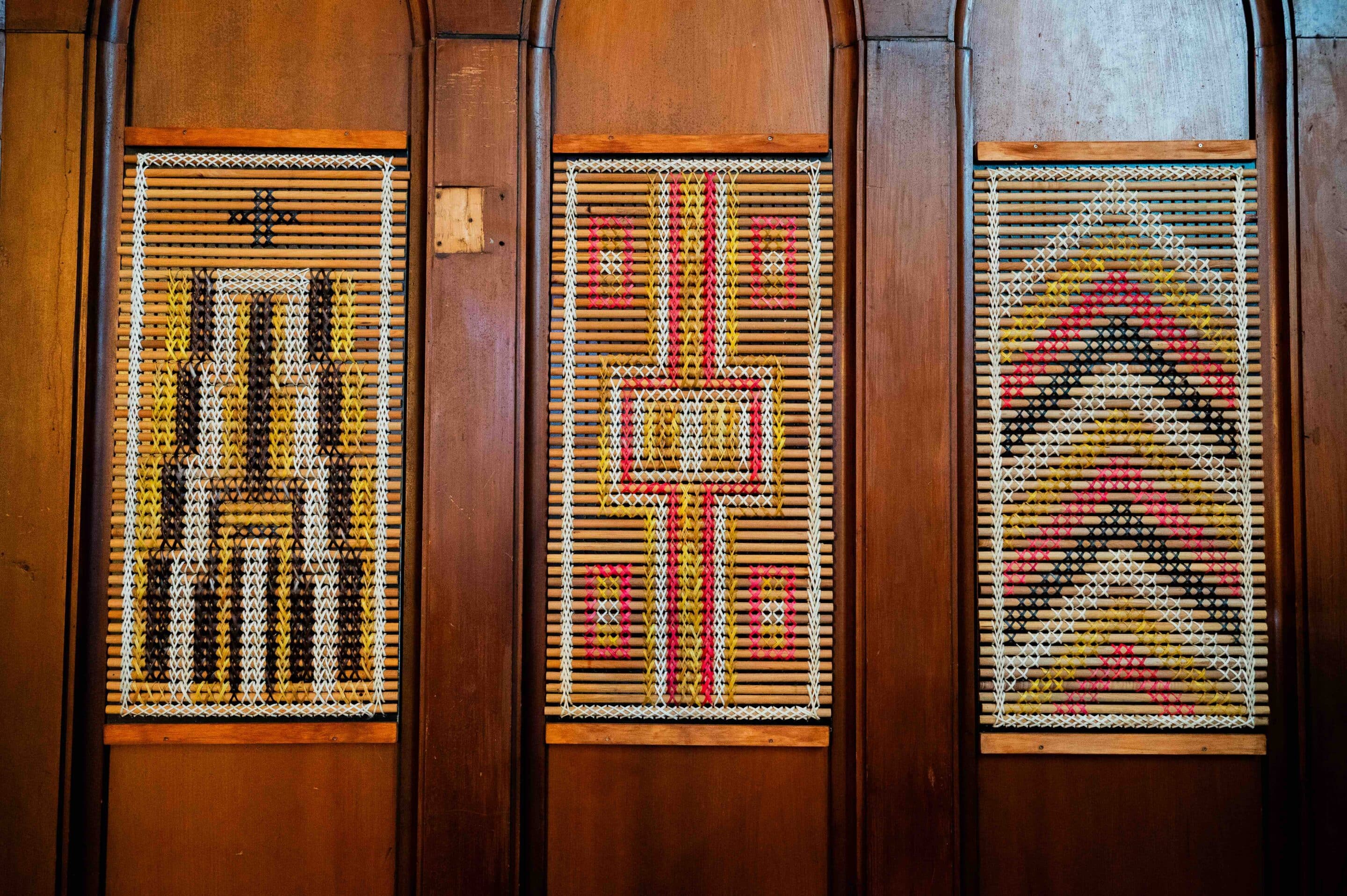
Panel 6

Panel 7
Waiata – ‘He Poi’
The above panels are a visual accompaniment to an original composition by the Venerable Sir Kīngi Īhaka (the first Māori Missioner of Tāmaki Makaurau), entitled ‘He Poi.’ The piece remembers and honours the early Māori missionaries who spread the seed of the Gospel throughout the different tribal regions of Aotearoa. Presenting the Gospel as a traditional Māori poi, the Venerable Sir Kīngi Īhaka likens the twirling of the poi to how the Gospel was cast from one area to another. The lyrics to the song can be found on page 154 of the Anglican Prayer book, and a recording of the waiata can be found below:
